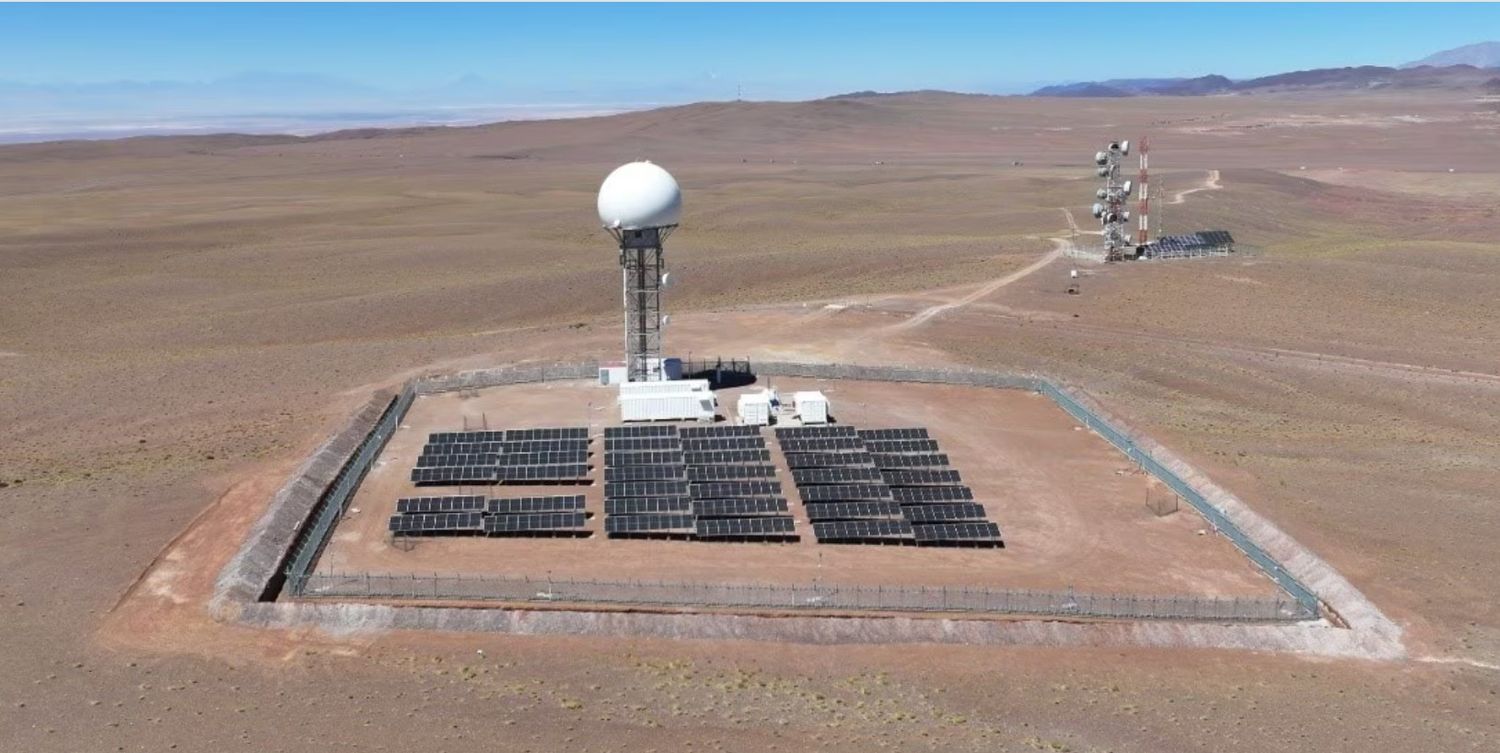The General Directorate of Civil Aeronautics (DGAC) of Chile, in collaboration with Thales, has launched the world’s first air traffic control radar station powered entirely by solar energy.
The station is located in the north of Chile, specifically in the Atacama Desert, more than 3,500 meters above sea level, a region known for its high solar incidence.
The radar system includes a primary STAR NG radar and a secondary RSM radar, both developed by Thales. These devices are capable of detecting a wide range of aerial targets, from helicopters to commercial airplanes and jets, moving at various speeds. The station’s energy infrastructure is based on 340 solar panels covering an area of 10,000 m², with a maximum generation capacity of approximately 960 kWh per day.
This implementation not only marks a step forward in air safety and surveillance for the region but also sets a precedent for sustainability and the use of renewable energies in the civil aviation industry. The project aligns Thales and the DGAC with global initiatives aimed at reducing environmental impact and promoting a greener future, consistent with Chilean national policies and the guidelines of the International Civil Aviation Organization (ICAO).
«or DGAC, at a strategic level, this new air traffic control radar station is undoubtedly a great contribution to air safety in the north of the country where there is currently a high air traffic density that will be fully covered by this new system, given its measurement range, which is the highest in the market at 100 nautical miles in the case of the primary radar and 250 nautical miles in the case of the secondary radar. The environment benefits are also outstanding and unique, limiting its impact on climate change by being 100% powered by solar energy which is consistent with the Chilean policies and the ones adopted by ICAO, in line with the concept that all nations should spare no effort to mitigate and reduce the environmental impact so that the next generations and our planet have a more sustainable future,» said Juan Alegría, Systems Director at the DGAC.
For his part, Lionel de Castellane, VP of the Civil Radars Segment at Thales, pointed out that «This project delivery is a milestone in the civil aviation industry and a commitment to sustainability. This is not only a technological achievement for DGAC and Thales, but also an example of environmental responsibility, demonstrating Thales’ commitment and capability to create sustainable solutions in-line with customer sustainable requirements and global objectives of preserving the environment«.
«t is an example of a project contributing to low carbon future, and contributes to the IATA to Fly Net Zero by 2050 commitment. It demonstrates how Thales advanced technologies are helping to make the world safer and more environmentally responsible,» he added.
The project also includes the preservation of archaeological sites in the region, with the authorization of the native communities, ensuring a respectful and harmonious coexistence with the environment and its history.
Thales also highlighted that it has been present in Chile for 53 years, having delivered 75% of the radars that are currently in operation.


Comentarios
Para comentar, debés estar registrado
Por favor, iniciá sesión